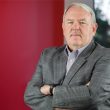Hopefully, the next 700 MHz plan can include more outreach
During the Association of Public-Safety Communications Officials (APCO) Winter Summit last week, Steve Proctor—executive director of the Utah Communication Agency Networks (UCAN)—explained the challenging process of getting a statewide communications effort off the ground.
One of the key items Proctor noted was the need for outreach about the notion, so all affected parties could understand the potential benefits, challenges and compromises associated with joining UCAN. This includes political and public-safety decision makers targeted as well as discussions with the “boots on the ground”—the first responders UCAN was designed to serve—to get their input on what they needed the network to do so they could do their jobs more effectively, Proctor said.
Such a process was conspicuously absent as the FCC developed a public-private partnership proposal for a wireless broadband network for public safety that would be built by the commercial operator that won the 700 MHz D Block in conjunction with the Public Safety Spectrum Trust (PSST), the licensee for public safety’s broadband frequencies in the 700 MHz band.
Of course, the D Block auction failed to attract a qualified bid, and the status of public-safety’s broadband spectrum in the 700 MHz remains in limbo, waiting for a new FCC to decide its fate.
Meanwhile, the lack of outreach has caused public-safety support for the public-private partnership proposal to splinter.
“The PSST never came to us and asked us for our input,” said Charles Dowd, deputy chief for the New York City police department. “To my knowledge, they never went to any major city and asked them for their input.”
But several factors worked against the PSST and the FCC in making such outreach efforts. For one thing, time was an enemy—a big one. Remember, the FCC approved the public-private partnership plan only eight months before Congress said the D Block had to be auctioned, and the FCC named the PSST as the public-safety licensee just two months before the auction began.
In addition, there was not a clear message for the PSST or the FCC to relay to local public-safety agencies during this time. Until a D Block winner was identified, any statements regarding network capabilities, buildout timetables, etc., were more speculation/wish than reality.
Finally, even if these puzzle pieces had been in place, it’s questionable how much outreach the PSST could have done, because it lacked a revenue source—and when it did borrow money from its adviser, Cyren Call Communications, the PSST was criticized heavily.
“In the ideal world, certainly [PSST officials] should have outreached to a lot more people. Of course, if we want to live in the ideal world, then somebody should have funded them,” said Charles Werner, fire chief for Charlottesville, Va. “In short, it’s a miracle that the PSST has been able to do what it’s done so far—and that it’s had the outreach that it’s had—with zero funding.”
With this in mind, PSST Chairman Harlin McEwen said he believes Dowd’s criticism about the lack of outreach is unjustified.
“I was supposed to call all the thousands of police departments in the country? [Dowd is] putting all that responsibility on my shoulders, when we have no staff?” McEwen said. “He’s got a huge staff and budget. I have no money and no staff. This was all a public proceeding. For him to say we didn’t reach out to him is a little ridiculous, He didn’t participate in the process until he realized that he wasn’t getting his way.”
In this case, both sides offer a legitimate argument. But finger pointing within public safety is not going to resolve the problem. What’s needed is public-safety representation—whether it is the PSST, the FCC or some combination of regional or local organizations—that is financially stable and has the resources to do necessary outreach.
And that outreach ideally would come in two phases. First, an initial phase to determine the short-term and long-term needs of public safety—and the commercial operator, if a public-private partnership remains the model—that the network should address before the FCC and Congress write new rules. During this time, it would be nice to inventory public safety’s assets—tower sites, backhaul, backup power.—that could be leveraged in this broadband effort. After the rules are written, more outreach is needed to educate affected parties about the plan.
For the first time in this process, there is not a near-term deadline looming, such as an auction date or a national election, that is forcing people to act hastily regarding a 700 MHz proposal. This is a chance—perhaps the best chance—to pursue public-safety broadband in a more logical, detailed manner. In other words, to get it right.
This is not a situation where simply throwing money at a problem will solve it. However, at least some funding—a pittance, compared to the economic-stimulus bill recently passed—is needed for public-safety representation to do its job properly, which includes doing the kind of outreach to ensure that this broadband endeavor meets the needs of first responders.
What do you think? Tell us in the comment box below.

















